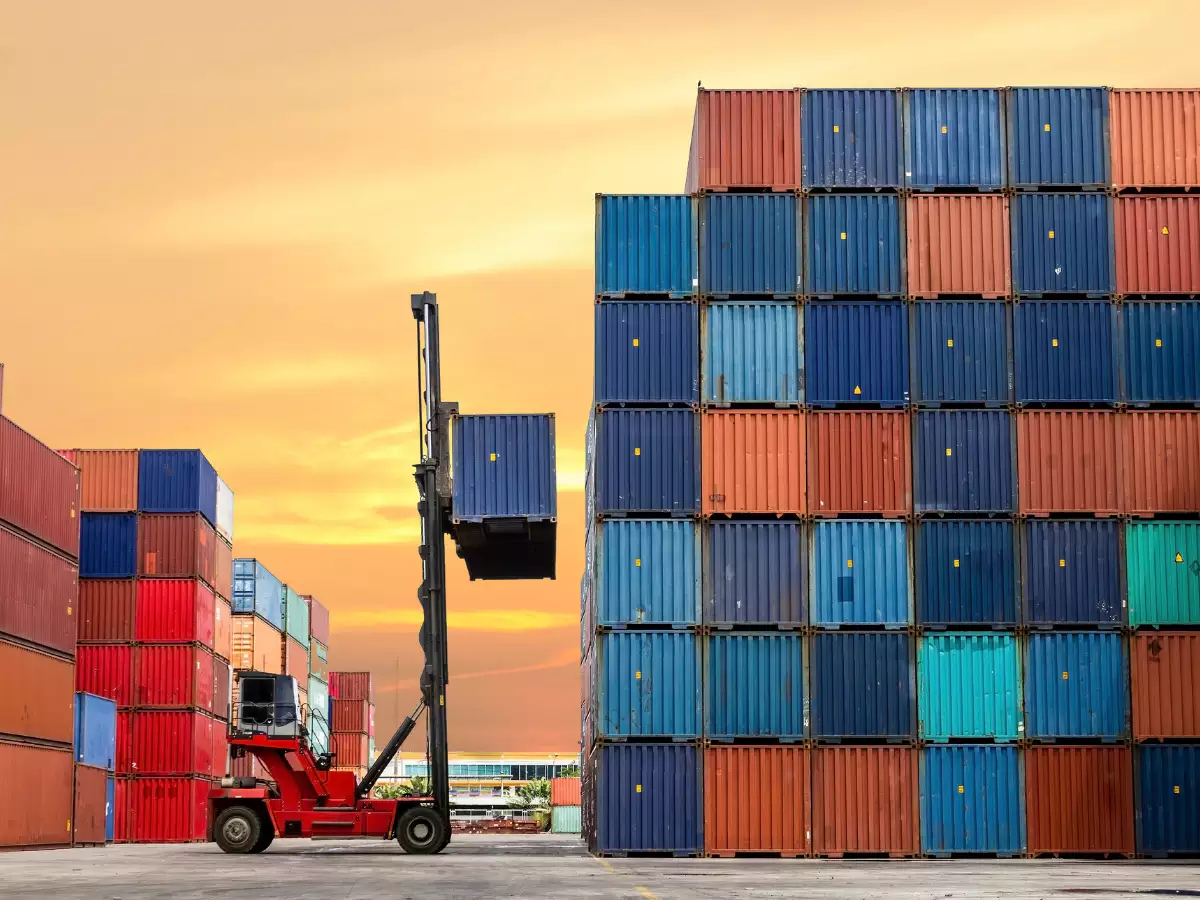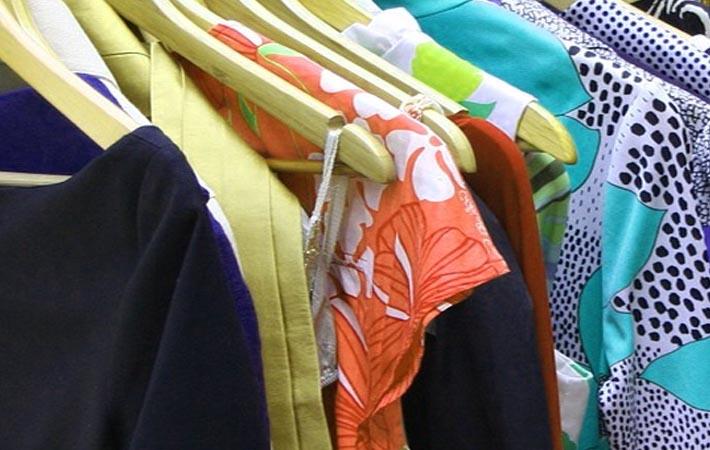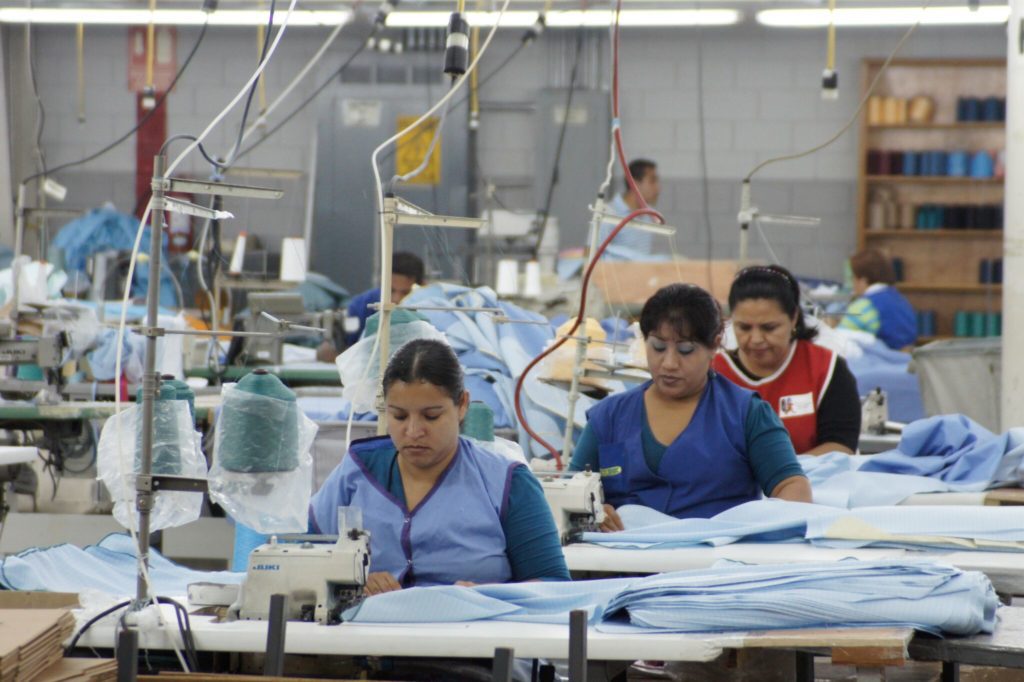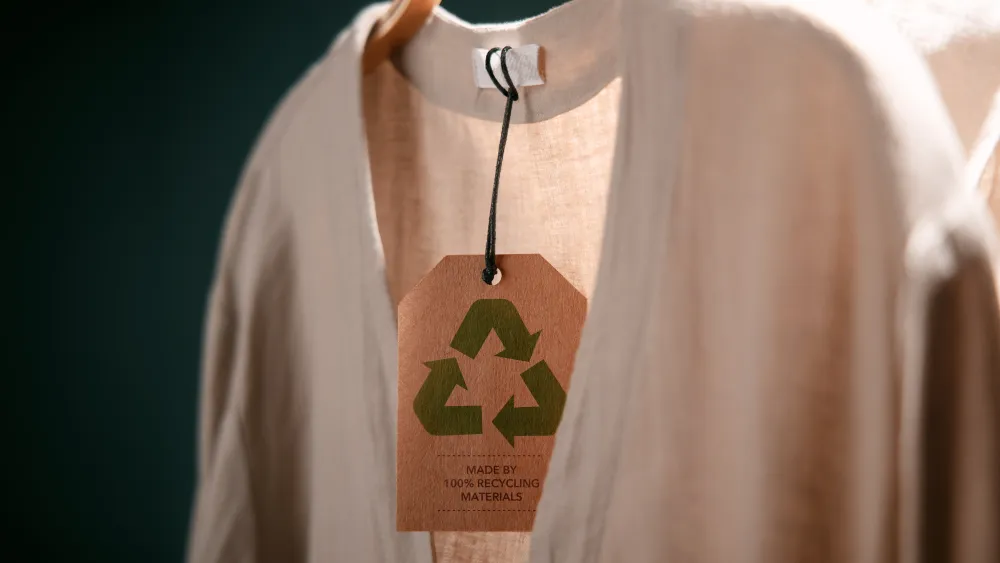FW
The maiden edition of the Textiles Recycling Expo, from June 04-05, 2024 in Brussels, will address the growing issue of textile waste. This first-of-its-kind expo will focus on the recycling of fabrics, clothing, footwear, fibers, and non-wovens.
Free to attend and fostering collaboration, the expo welcomes a global audience across the entire textile supply chain. This includes leading recyclers, waste managers, textile manufacturers, clothing suppliers, retailers, and other relevant stakeholders.
Driven by new regulations and consumer demands, the expo aims to find solutions for diverting textile waste from landfills. Industry leaders, innovators, and stakeholders will convene at a high-level conference to discuss the future of sustainable textiles.
The expo will showcase innovative solutions for textile waste reduction, featuring the latest sorting, shredding, and recycling technologies. Attendees can also meet with textile recyclers, fiber manufacturers using recycled materials, and companies at the forefront of this movement. Supported by leading industry organisations, the Textiles Recycling Expo will beorganised by AMI, a leader in international recycling events.

After navigating the economic hurdles of 2023, Vietnam's textile and garment exports are showing signs of recovery. Foreign direct investment (FDI) into Vietnam reached US $11 billion in the first five months of this year, marking a 2 per cent year-on-year increase, according to the Foreign Investment Agency under the Ministry of Planning and Investment (MPI). This uptick in FDI underscores renewed business opportunities within the country.
VIATT 2025: A platform for growth
To capitalize on these opportunities, the Vietnam International Trade Fair for Apparel, Textiles, and Textile Technologies (VIATT) will return from February 26-28, 2025, at the Saigon Exhibition and Convention Center (SECC). Messe Frankfurt (HK) Ltd., the event organizer, promises an enhanced experience based on feedback from the inaugural edition.
Wilmet Shea, General Manager of Messe Frankfurt (HK) Ltd., highlighted that feedback from the first edition of VIATT has motivated the organizers to enhance next year’s fair. Shea emphasized the optimism surrounding Vietnam's improving business environment and expressed confidence in VIATT 2025's potential to effectively support and amplify the renewed growth of the country's textile industry.
Sustainability and innovation at the forefront
VIATT 2025 aims to highlight sustainability and technological advancements within the textile industry. The fair will feature an Econogy Hub, dedicated to sustainability in textiles, and an Innovation & Digital Solutions Zone, showcasing AI design, digital manufacturing, and big data analytics.
The inaugural edition of VIATT attracted 409 exhibitors and 17,262 visitors from 55 countries and regions. The 2025 edition will continue to feature a diverse range of exhibitors across apparel, home textiles, and technical textiles sectors.
Apparel fabrics & fashion
Vietnam's textile and garment exports grew by 6.3 per cent year-on-year to over US $10 billion in the first four months of 2024, with the US, EU, South Korea, China, and Japan being the top markets. To meet this demand, Vietnam's textile industry imports significant raw materials. At VIATT 2024, yarns, fibers, fabrics for casual wear, sportswear, uniforms, and garment accessories were in high demand.
Vietnam's home textile market is projected to grow at a CAGR of 2.4 per cent from 2024 to 2032, driven by increasing demand for modern home textiles, e-commerce expansion, and favorable government initiatives. VIATT 2025 will feature products like bedding, loungewear, bathroom textiles, curtains, upholstery, and home textile accessories.
Technical textiles & technologies
Investors in the textile industry are focusing on optimizing production capacity, streamlining supply chains, and enhancing product quality to stay competitive. The Innovation & Digital Solutions Zone at VIATT 2025 will showcase textile and nonwoven machinery, CAD/CAM, CMT, and technology for embroidery, knitting, sewing, and printing.
Global connections and trade
VIATT 2025 aims to leverage the participation of over 50 textile fairs organized by Messe Frankfurt in 13 countries. This network will enable the fair to serve as a platform for connecting Vietnamese businesses with international players, facilitating cross-border trade, knowledge sharing, and collaboration.
The Vietnam International Trade Fair for Apparel, Textiles, and Textile Technologies (VIATT) is organized by Messe Frankfurt (HK) Ltd. and the Vietnam Trade Promotion Agency (VIETRADE), covering the entire textile industry value chain. The event is expected to further bolster Vietnam's position in the global textile market, aligning with the country's economic and environmental goals.
Freudenberg Performance Materials Apparel has launched the RCY 99xx series, a new line of recycled polyester (rPET) shirt interlinings, marking a sustainable evolution of its renowned 95xx series. The 95xx series, famous for its bi-elastic properties, has been a market leader for over two decades, known for its quality and performance.
The RCY 99xx series, crafted from rPET, aims to meet contemporary sustainability demands without compromising on quality. These bi-elastic interlinings are compatible with a wide range of fabrics, including pure cotton, T/C, flannel, oxford, cotton-linen blends, seersucker, jersey, and various stretch knits. They maintain the natural feel, texture, and shape of these fabrics while enhancing shirt design with innovative features.
Available in weights ranging from 30 to 150 grams per square meter, the RCY 99xx series caters to diverse shirt styles such as men's casual shirts, women's blouses, polo shirts, sports shirts, and denim shirts. This versatility allows designers and manufacturers to address evolving market demands while adhering to sustainability principles.
Freudenberg's House of Sustainability supports customers in achieving their sustainability goals by driving innovation in garment manufacturing. The RCY 99xx series exemplifies this commitment, offering responsible products for every season and reinforcing Freudenberg Apparel's dedication to sustainable impact.
Valued at $26.65 billion in 2022, the global spinning machinery market is projected to grow at a 7.2 per cent CAGR to reach $45.80 billion by 2030.
As per a report by Whatech, offering abundant opportunities to manufacturers, suppliers and end-users, the spinning machinery market aims to enhance productivity, quality, and sustainability in textile production. The demand for sustainable and eco-friendly textiles is particularly driving market growth, encouraging the adoption of energy-efficient technologies like servo motors and automated control systems. Industry 4.0 technologies, such as IoT sensors and artificial intelligence, further enhance process optimization and predictive maintenance in spinning operations, catering to the trend of customization and personalization in textile products.
Key drivers of market growth include population growth, rising disposable incomes, and technological advancements in spinning technologies like rotor spinning and compact spinning. Sustainability concerns also push demand for spinning machinery with energy-saving features and eco-friendly materials. However, challenges such as fluctuating raw material prices, complex spinning processes, and regulatory requirements pose hurdles to market expansion.
Despite these challenges, the spinning machinery market continues to expand, driven by technological innovation, market diversification, and evolving consumer trends. Strategic collaborations and investments in research and development are expected to further accelerate growth, making spinning machinery a cornerstone of industrial excellence and innovation in the global textile industry.
The Benetton Group has named Claudio Sforza has its new Chief Executive Officer.
Having previously held senior positions at major corporations including Astaldi, Poste, and the Ilva Group, Sforza began her career in Administration and Finance at Pfizer, followed by advancements in the telecommunications sector. She is a graduate of La Sapienza University in Rome, where he earned a degree in Economics & Commerce.
A global fashion brand, the Benetton Group is based in Ponzano Veneto, Italy. The group was founded in 1965 and has a network of about 5,000 stores worldwide. It is a wholly owned subsidiary of the Benetton family’s holding company Edizione. The Group has a consolidated identity comprised of colour, authentic fashion, quality at democratic prices and passion for its work: these values are reflected in the the strong, dynamic personality of the brands United Colors of Benetton and Sisley.
In FY24, the share of India's yarn exports to China rose to 21 per cent in FY24from 10 per cent in FY23.
This increase was boosted by the competitive pricing of Indian cotton yarn alongwith concerns surrounding Xinjiang cotton production, which led global markets to seek alternatives from India. Bangladesh, China, and Vietnam collectively accounted for 60 per cent of India's cotton yarn exports.
During the fiscal year, India’s cotton yarn exports soared by 83 per cent, driving the share of yarn exports to 32 per cent of India's total production, up from 19 per cent in FY23. This growth was pivotal in mitigating domestic market challenges, where subdued demand persisted despite a 9 per cent increase in overall cotton yarn production.
Meanwhile, domestic cotton fiber prices, after peaking in the first half of FY23, declined by 25 per cent in FY24 due to weaker demand in the domestic market. Looking ahead, despite a projected 6 per cent reduction in cotton fiber production for 2024 due to decreased sown areas, the carry-over surplus from previous years is expected to stabilize prices.
The ongoing Red Sea conflicts had minimal impact on cotton yarn exports, as most shipments were directed to stable markets like Bangladesh, China, and Vietnam. However, prolonged conflict could potentially disrupt apparel export volumes, thereby indirectly affecting cotton yarn export volumes and prices.
For FY25, domestic spinners anticipate a modest volume growth of 4-6 per cent, driven by increased exports to Bangladesh and China. This outlook is supported by competitive yarn pricing and a gradual recovery in export demand, while domestic consumption remains subdued.

Imagine a world where your t-shirt comes with a digital identity, revealing its journey from cotton field to clothing rack. This is the promise of Digital Product Passports (DPPs), a game-changer for the textile and apparel sector.
What are DPPs?
DPPs are essentially secure digital records containing a product's entire lifecycle information. Think of them as digital birth certificates for your clothes. They capture details like materials used, manufacturing processes, certifications earned (like Fair Trade or GOTS), and even care and recycling instructions. This information is linked to a unique product identifier, often a QR code displayed on the clothing label. By scanning the code with a smartphone, consumers and other stakeholders gain instant access to the product's story.
Textiles taking the lead
The European Union (EU) is at the forefront of this revolution. The EU's ambitious "Strategy for Sustainable and Circular Textiles" identifies textiles as a priority sector for DPP implementation. This focus stems from the industry's significant environmental impact. "Textiles have been earmarked as a key industry for overhaul under the EU's Circular Economy Action Plan," explains a recent article by Protokol, a business intelligence platform. "Digital Product Passports are being mandated as a core technology for the initiative."
"Consumers can access information about the materials used...and the manufacturing processes involved," explains Digital Link, a sustainability solutions provider. This empowers consumers to make informed choices that align with their values. Imagine choosing a shirt based on its recycled cotton content or water-saving production methods!
The EU Ecodesign for Sustainable Products Regulation (ESPR) mandates their use in textiles by 2027-28, with full implementation expected by 2030. This regulation sets a precedent for other countries to follow, potentially creating a global standard for textile transparency.
How it works, a case study
Trace4Value, a Swedish research project, is pioneering DPP implementation in textiles. Their pilot project demonstrates the potential of DPPs to transform the industry. "Our project's overarching goal is to improve transparency and sustainable production practices," says their website. Imagine a garment with a DPP revealing its use of recycled materials or water-saving dyeing techniques. This empowers consumers to make informed choices that align with their values.
However, despite all the positives standardization and data security remain crucial challenges. Collaboration across the industry is essential to ensure smooth implementation. Indeed the potential benefits are undeniable. As industry analyst Sandra Can't Veer states in a GS1 Europe report, "The new EU sustainability textile strategy positions the Digital Product Passport as a game changer for the textile industry."
The digital age is transforming the clothing industry and DPPs are poised to revolutionize transparency and sustainability in textiles. With the EU leading the charge, this innovation has the potential to reshape the way we produce and consume clothing on a global scale.

Beating expectations, China's exports in May jumped 7.6 per cent year-on-year to $302.35 billion, as per customs data. This growth comes despite ongoing trade tensions with major economies like the US and Europe. While exports thrived, imports witnessed a slowdown, growing by only 1.8 per cent to $219.73 billion, falling short of analyst predictions of around 4 per cent growth. This resulted in a wider trade surplus of $82.62 billion for China.
Stronger textile and apparel performance expected
While specific data for the textiles and apparel sector wasn't included in the report, the overall export growth suggests a positive performance for these sectors as well. Textiles and apparel have historically been a significant portion of China's exports, and analysts predict continued strength due to:
Lower base effect: Textile and apparel exports dipped in May 2023, providing a lower benchmark for comparison and potentially inflating the May 2024 growth figures.
Shifting trade patterns: With rising tensions between China and some traditional trading partners Chinese exporters may be focusing on new markets in Southeast Asia and other regions, potentially boosting textile and apparel shipments to these areas.
Growth in specific destinations
The customs data did shed light on geographical trends in China's exports:
ASEAN: The 10 nations of the Association of Southeast Asian Nations remained the top destination for Chinese goods, with exports growing 9.7 per cent year-on-year in the January-May period. This suggests a growing market for Chinese textiles and apparel in Southeast Asia.
US and EU: Exports to the US grew a meager 0.2 per cent in the first five months of 2024 compared to the same period in 2023. Shipments to the European Union declined by 3.9 per cent. These figures indicate a potential decline in textile and apparel exports to these traditional markets due to trade tensions.
The reasons behind China's May export growth are complex. A low base effect from 2023 likely played a role, alongside factors like a weaker Chinese currency and businesses rushing shipments ahead of potential tariff hikes.
While the data suggests continued strength in the textiles and apparel sector, a more comprehensive analysis awaits a detailed breakdown of industry-specific export figures. Regardless, China's export performance in May highlights the country's ability to adapt to a changing trade landscape.
A favored brand among celebrities such as Gigi Hadid, Justin Bieber, and Rosalía, Icon Denim LA has launched its first-ever 100 percent organic cotton denim collection for both men and women.
Named the Eco Denim Capsule, this collection features a range of styles including the Noa Eco, a unisex oversized shirt, the women's Poppy Eco, a wide-leg jean with cutouts, and various other eco-friendly options.
Highlighting the growing demand for eco-conscious brands amongst consumers, ValyVittoria, Head-Communication, Icon, emphasises on the brand’s commitment to leading by example in the denim industry. With sustainability as its top priority, Icon Denim uses organic materials in its collection to reduce the brand’s environmental impact,she adds.
The Eco Denim Capsule reflects Icon Denim's partnership with reputable suppliers known for their dedication to sustainability and high-quality materials. The brand's laundry facilities are certified under the ZDHC program, focusing on eliminating hazardous chemical releases, while innovative techniques like ozone and laser machine finishing reduce water and chemical usage.
Furthermore, Icon Denim adheres to production processes aligned with the Sedex Members Ethical Trade Audit (SMETA) criteria, ensuring safe working conditions, ethical business practices, and responsible supply chain management.
Textiles Minister Giriraj Singh indicates, the government will approve a highly advanced type of Bt cotton for commercial cultivation. He also highlights the textile ministry’s efforts to leverage Self-Help Group (SHG) members to address labor shortages in the sector.
The Indian Council of Agriculture Research (ICAR) is currently conducting trials of HT (Herbicide Tolerance) Bt cotton, also known as BG III, explains Singh. Upon the completion of these assessments and requisite approvals, commercial cultivation of this Bt Cotton variety willcommence, he adds.
This new variety of Bt cotton holds potential to enhance textile production and reduce farmers' costs by promoting wider cultivation across regions.
It is important to boost cotton output for the growth of India's textile and apparel sector, which currently stands at approximately $168 billion, exphasises Singh. Growing at a projected compound annual growth rate (CAGR) of 10 percent, the textile sector in India aims to reach $350 billion by 2030, he affirms.










